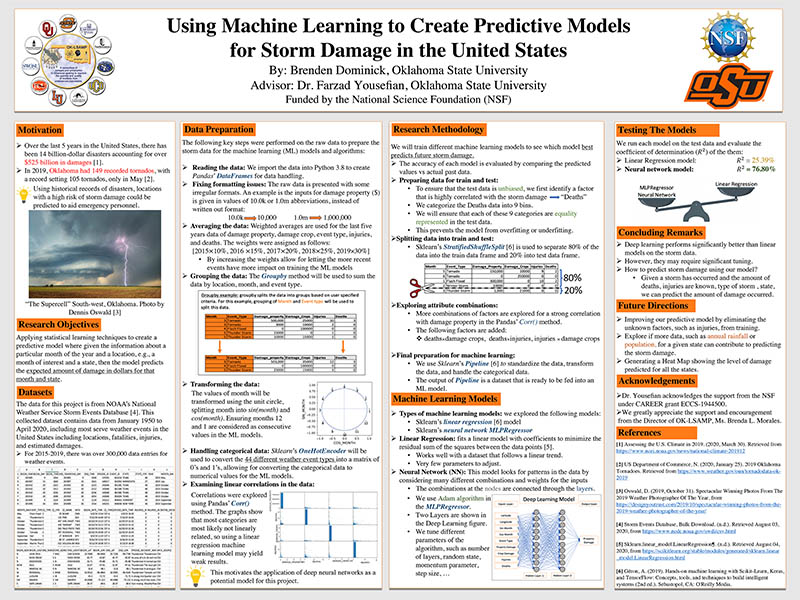
Hover to pan and click to magnify. Click again to pan at full screen.
Brenden M. Dominick, College of Industrial Engineering and Management, Oklahoma State University, Stillwater, OK. Faculty Advisor, Dr. Farzad Yousefian, Oklahoma State University, Stillwater, OK.
Brenden M. Dominick, College of Industrial Engineering and Management, Oklahoma State University, Stillwater, OK. Faculty Advisor, Dr. Farzad Yousefian, Oklahoma State University, Stillwater, OK.
ABSTRACT
The research objective of this project is to apply machine learning techniques to create a predictive model where given a particular month and a state, the model predicts the expected storm damage in dollars for that specified month and state in the USA. This knowledge could be of significant importance for emergency planners and future disaster relief funding in areas of high risk. We use the publicly available data collected from the National Center for Environmental Information including 300,000 data entries for weather events in the past five years. This data holds detailed information regarding the time, type, location, severity of storm events, damage, injuries, deaths, and the estimated damage caused by storms. It includes events such as hurricanes, ice storms, hail storms, and tornadoes. We consider both linear regression and neural network deep learning models. After preparing the data and running implementations for training and testing the models, the Neural Network (NN) model was found to perform very well on the test data. The NN has an accuracy score value of 76.80%, that is significantly higher than the linear regression model accuracy score of 25.39%. The proposed NN model can be used to make predictions about the expected loss in dollars associated with future storms and also assess the risk of having a severe storm. Given that a storm has occurred, and the amount of deaths, injuries, type of the storm, and the state are known, this model can predict the amount of storm damage that has happened. In this project, we used Python 3.0 as the coding language, Jupyter Notebook as the user interface, and the scikit-learn as the main machine learning library.

DISQUS COMMENTS WILL BE SHOWN ONLY WHEN YOUR SITE IS ONLINE